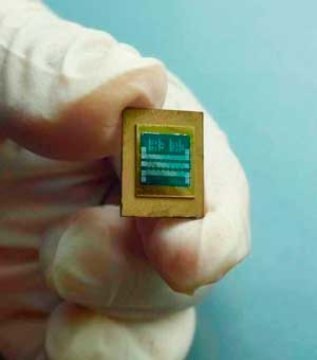A single layer of diamond can now safeguard high-power electrical equipment from overheating. This becomes extremely vital in equipment prepared with use of gallium nitride. The finding has been disclosed by a group of researchers that reveal that a single coating of diamond can not only protect such equipment from overheating but can also enhance their thermal performance to a great extent.

Electrical devices, specifically those that are high-powered can become extremely hot. When the components present within them are linked to a singular semi-conductor chip, then the heating or overheating can become a severe problem that at times might also be difficult to tackle. An overheating electrical component wastes energy and is at a risk of acting unpredictably or falling altogether. As a result, thermal management is a significant design consideration.
It becomes even more essential in electrical items prepared with use of gallium nitride. “Gallium nitride is capable enough of handling high voltages and can allow higher power ability and extremely large bandwidth,” says Yong Hang from the Singapore Agency for Science and Technology and Research Institute of microelectronics. “But in gallium nitride transistor chip, the heat concentrates on small areas, creating multiple hotspots. “Such exacerbates the problem of heating.
Han and his co-associates illustrate both numerically and experimentally that a singular layer of diamond can spread heat and enhance the overall thermal performance of devices made with gallium nitride. The scientists performed a thermal test for this, where in they outlined a thermal test chip that comprises eight small hotspots, each varying between 0.45 to 0.3 millimeters in size, to release the heat generated in actual devices. They linked this chip to a single layer of premium quality diamond engineered utilizing a method known as chemical vapor deposition.
The diamond heat extended out and test chop were linked with the use of a thermal compression bonding procedure. It was then linked to a micro cooler, which is a device comprising a range of micrometer-wide channels and a micro-jet impingement assortment. Water impinges on the source of heat wall and then shifted through the micro-channels to eradicate the heat and maintain the coolness of the structure.
Han and his group tested their device by releasing 10 – 120 watts of heating power in test chops of 200 to 100 micrometer thickness. To differentiate the heating power, the diamond heat layer and micro cooler assisted in maintaining the structure at a temperature below 160 Degree Celsius. The maximum temperature was around 27.3 percent lesser than another device utilizing copper as the heat extending layer.
There were further thermal simulations noticed that confirmed the experimental results. The simulations also showed that the performance could be enhanced by increasing the thickness of the diamond layer and that a product bonding quality between the gallium nitride chip and the heat spreader made of diamond was critical to procure the best performance. “We now hope to introduce a new micro-fluid cooler of greater and more uniform cooling capability and to accomplish thermal management utilizing a layer of diamond near an electronic gate,” says Han.
Filed Under: News


Questions related to this article?
👉Ask and discuss on Electro-Tech-Online.com and EDAboard.com forums.
Tell Us What You Think!!
You must be logged in to post a comment.